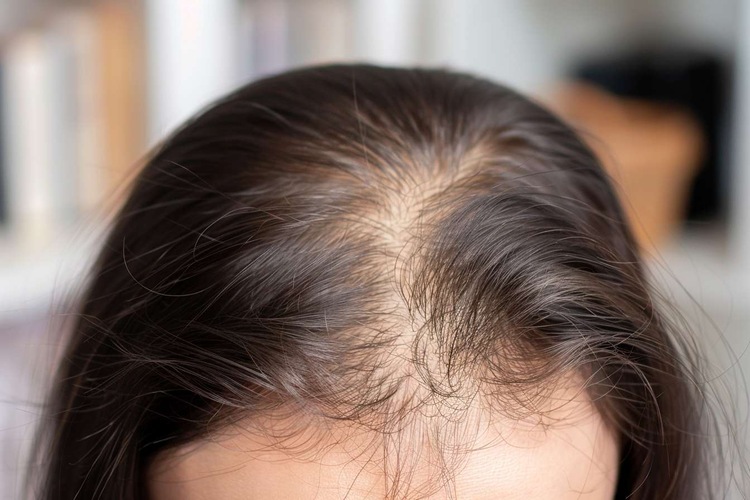Understanding Hair Loss: Causes, Types, and Treatment Options
Hair loss, also known as alopecia, is a common condition that affects millions of people worldwide. It can occur in both men and women, impacting various areas of the scalp and body. This article will explore the different aspects of hair loss, including its causes, types, and potential treatment options.

-
Stress and trauma
-
Nutritional deficiencies
-
Certain medications
-
Autoimmune disorders
-
Scalp infections
Understanding the underlying cause is crucial for determining the most effective treatment approach.
What are the different types of hair loss?
Hair loss can manifest in various forms, each with distinct characteristics and patterns. Some common types include:
-
Androgenetic Alopecia: This is the most prevalent form of hair loss, affecting both men and women. In men, it typically begins with a receding hairline and thinning at the crown, while women often experience overall thinning across the scalp.
-
Alopecia Areata: An autoimmune condition causing patchy hair loss on the scalp and sometimes other parts of the body.
-
Telogen Effluvium: Characterized by temporary, diffuse hair shedding often triggered by stress, illness, or hormonal changes.
-
Traction Alopecia: Caused by prolonged tension on the hair follicles, usually due to tight hairstyles or excessive hair styling.
-
Scarring Alopecia: A group of disorders that destroy hair follicles, replacing them with scar tissue and causing permanent hair loss.
Identifying the specific type of hair loss is essential for determining the most appropriate treatment strategy.
How can baldness be prevented or slowed down?
While not all forms of hair loss can be prevented, there are several steps individuals can take to maintain healthy hair and potentially slow down the balding process:
-
Maintain a balanced diet rich in vitamins and minerals essential for hair health, such as iron, zinc, and biotin.
-
Manage stress through relaxation techniques, exercise, and adequate sleep.
-
Avoid harsh hair treatments and tight hairstyles that can damage hair follicles.
-
Use gentle hair care products and avoid excessive heat styling.
-
Consider medications like minoxidil or finasteride (for men) under medical supervision.
-
Explore low-level laser therapy, which may stimulate hair growth in some cases.
-
Stay hydrated and maintain overall health through regular exercise and a healthy lifestyle.
It’s important to note that the effectiveness of these strategies may vary depending on the underlying cause of hair loss and individual factors.
What treatment options are available for hair loss?
There are numerous treatment options available for individuals experiencing hair loss, ranging from over-the-counter solutions to medical procedures. Some common approaches include:
-
Topical Medications: Minoxidil (Rogaine) is an FDA-approved treatment for both men and women, applied directly to the scalp to promote hair growth.
-
Oral Medications: Finasteride (Propecia) is prescribed for men to block the conversion of testosterone to DHT, potentially slowing hair loss and promoting regrowth.
-
Hair Transplantation: Surgical procedures like Follicular Unit Transplantation (FUT) or Follicular Unit Extraction (FUE) can restore hair in balding areas.
-
Platelet-Rich Plasma (PRP) Therapy: This treatment involves injecting a concentrated solution of the patient’s own platelets into the scalp to stimulate hair growth.
-
Scalp Micropigmentation: A cosmetic procedure that creates the appearance of a fuller head of hair by tattooing pigment into the scalp.
-
Low-Level Laser Therapy: FDA-cleared devices use low-level lasers to stimulate hair follicles and promote growth.
How does hair loss affect self-esteem and quality of life?
Hair loss can have a significant psychological impact on both men and women, often affecting self-esteem, body image, and overall quality of life. Many individuals experiencing hair loss report:
-
Decreased confidence in social and professional settings
-
Feelings of anxiety or depression
-
Reduced satisfaction with personal appearance
-
Challenges in romantic relationships
-
Limitation of social activities or avoidance of certain situations
It’s important to recognize the emotional toll of hair loss and seek support when needed. Many individuals find that addressing their hair loss, whether through treatment or acceptance, can lead to improved self-esteem and quality of life.
What are some common myths about hair loss?
There are many misconceptions surrounding hair loss that can lead to confusion and misinformation. Some common myths include:
-
Wearing hats causes baldness: This is false. While tight headwear can contribute to traction alopecia, normal hat-wearing does not cause hair loss.
-
Hair loss only affects older individuals: Hair loss can occur at any age, even in teenagers and young adults.
-
Stress is the primary cause of hair loss: While stress can contribute to certain types of hair loss, it is not the sole or primary cause in most cases.
-
Hair products cause baldness: Regular use of hair care products does not typically cause hair loss, though harsh chemicals or excessive heat styling can damage hair.
-
Hair loss is always permanent: Many forms of hair loss are treatable or reversible with proper intervention.
Understanding the facts about hair loss can help individuals make informed decisions about their hair health and treatment options.
In conclusion, hair loss is a complex and multifaceted issue that affects many individuals worldwide. By understanding the causes, types, and available treatment options, those experiencing hair loss can make informed decisions about their care and potentially improve their overall well-being. Whether seeking medical treatment or learning to embrace their changing appearance, individuals have various paths to address the physical and emotional aspects of hair loss.
This article is for informational purposes only and should not be considered medical advice. Please consult a qualified healthcare professional for personalized guidance and treatment.






